Drowning in data, not insights?
You have mountains of information, but turning it into clear, actionable insights feels overwhelming and unnecessarily complex. It’s a common struggle.
This leads to frustrating manual data wrangling and inaccurate reports, causing your business to miss out on crucial opportunities for growth.
In fact, Coursera reports that organizations waste an average of 18% of their data analysis time due to inefficient data preparation. This lost time directly impacts your ability to make strategic decisions.
But the right tool can solve this, helping you unlock insights from your data without the usual technical headaches or budget constraints.
In this guide, I’ll show you the best data analysis tools to help you finally turn raw data into a strategic advantage for your business.
You’ll discover platforms that offer powerful visualization and seamless integration, empowering you to make smarter, data-driven decisions that drive growth.
Let’s dive in.
Quick Summary:
| # | Software | Rating | Best For |
|---|---|---|---|
| 1 | Power BI → | Enterprise Microsoft 365 users | |
| 2 | Tableau → | Organizations of all sizes | |
| 3 | Qlik → | Mid-to-large enterprises | |
| 4 | SAS → | Large, data-driven businesses | |
| 5 | Sisense → | App developers & technical teams |
1. Power BI
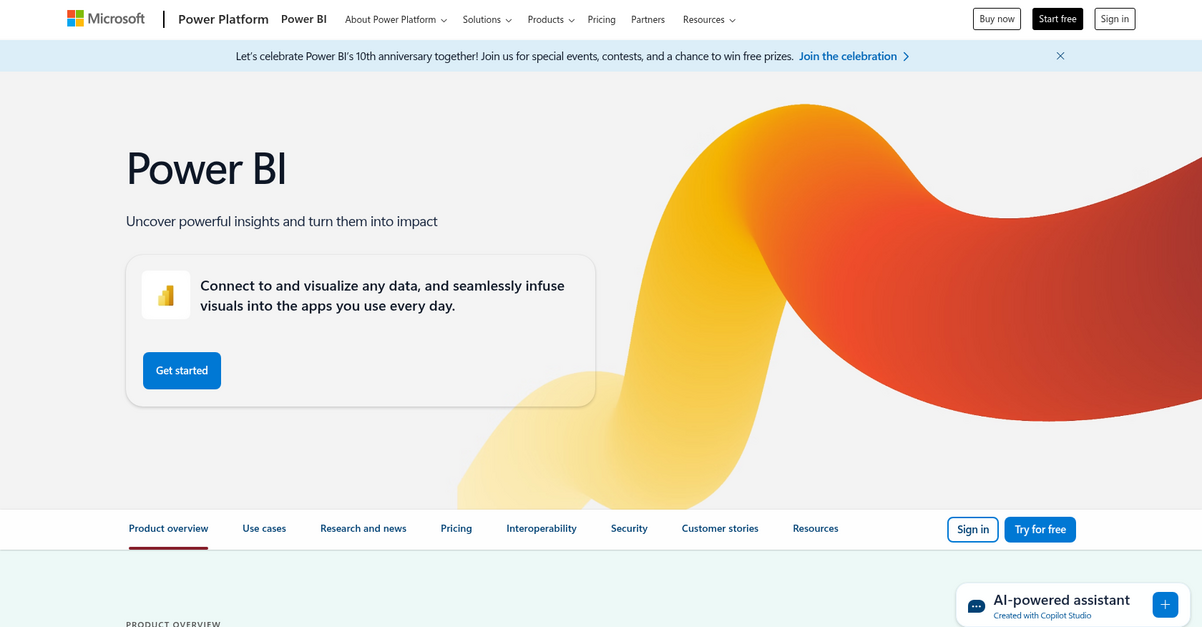
Struggling to transform raw data into actionable business insights?
Power BI helps you uncover powerful insights by connecting to and visualizing any data source. This means you can finally make sense of your disparate data.
The software offers advanced data-analysis tools and AI capabilities, enabling you to turn your data into compelling visuals and user-friendly reports that simplify complex information.
This ensures your insights drive real impact.
Here’s how Power BI helps you make better decisions, fast. You can bring all your data together to create datasets from any source, then add them to the OneLake data hub. This establishes a unified source of truth, making your data more reliable. Additionally, you can seamlessly embed and share these reports in other Microsoft services, including Teams, PowerPoint, and Excel, infusing insights directly into the applications your team uses every day. The result is greater productivity across your organization, empowering everyone to work with data more effectively. You can also empower anyone to work with data through free training resources.
Key features:
- Uncover Insights with AI: Utilize advanced data-analysis tools and AI capabilities to turn raw data into user-friendly reports and uncover hidden patterns.
- Bring All Your Data Together: Create unified datasets from any source and centralize them in the OneLake data hub for a single source of truth.
- Infuse Data Experiences Everywhere: Seamlessly embed and share interactive reports across Microsoft 365 apps like Teams, Excel, and PowerPoint.
Power BI features, pricing, & alternatives →
Verdict: Power BI is an excellent choice among the best data analysis tools, helping you overcome data complexity and fragmentation. Its ability to unify data, leverage AI for insights, and seamlessly integrate with daily business applications like Microsoft 365, which resulted in a 321% ROI over 3 years for one business, directly addresses the core pain points of data analysts and decision-makers.
2. Tableau

Struggling to make sense of your overwhelming business data?
Tableau’s visual analytics platform directly addresses the pain point of technical barriers and complexity.
This means you can turn trusted insights into autonomous action, anytime, anywhere, without getting bogged down in complex software.
It’s about asking questions, not learning software.
Tableau solves the challenge of extracting meaningful insights by transforming how you use data.
The platform offers limitless data exploration with built-in visual best practices, ensuring your flow of analysis is never interrupted. This enables you to create visualizations faster with conversational AI.
You can deploy Tableau in the cloud, on-premises, or integrate it natively with Salesforce CRM, connecting to all your data with fully integrated AI/ML capabilities, governance, and data management for visual storytelling and collaboration.
Understand and act on your data.
Key features:
- AI-Powered Insights: Level up your analytics and increase efficiency for analysts and business leaders with advanced AI-powered insights.
- Intuitive Visual Analytics: Make data analysis about asking questions, not learning software, with limitless data exploration and built-in visual best practices.
- Broad Platform Capabilities: Deploy in the cloud or on-premises, connecting to all your data with integrated AI/ML, governance, and data management for visual storytelling.
Tableau features, pricing, & alternatives →
Verdict: Tableau is one of the best data analysis tools, helping organizations of all sizes see, understand, and act on their data. It enables data analysts, business intelligence professionals, and decision-makers to transform complex data into actionable insights, driving business growth as evidenced by JLR delivering £250M in business value.
3. Qlik
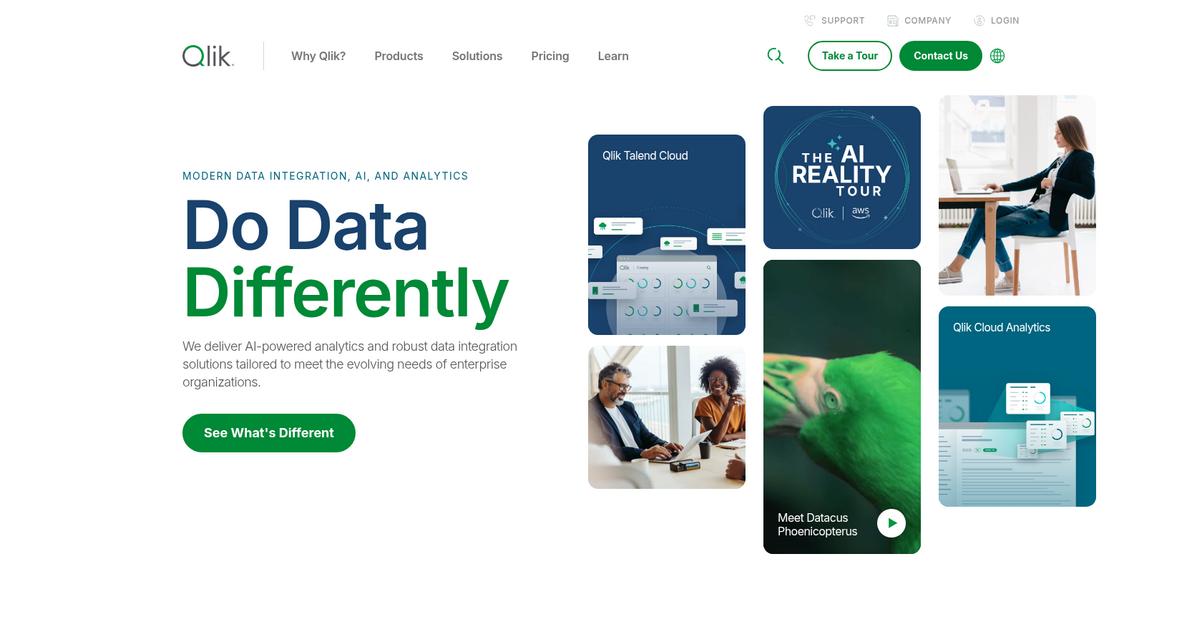
Struggling to find clarity in your mountains of data?
You might find yourself overwhelmed by disparate information, making it tough to pinpoint key trends.
Qlik tackles this by offering a solution to see the whole story from your data.
Here’s how you can gain clarity.
Qlik helps you bring all your data together, no matter where it lives. This means you can get a complete, unified view of your information.
You can then build powerful analytics and applications, helping you understand complex relationships and uncover hidden insights within your data. This allows for informed decision-making that drives your business forward.
Plus, you can deploy your insights across your organization, from dashboards to embedded analytics, ensuring everyone has access to the data they need to make better choices. This capability helps your team gain a competitive advantage and accelerate decision-making, which can lead to significant business growth.
Unlock your data’s true potential.
Key features:
- Data Integration: Connect and combine data from various sources to create a complete and unified view, eliminating information silos and ensuring data accuracy.
- Powerful Analytics: Build custom analytical applications and visualizations that help you discover hidden insights and understand complex data relationships for informed decision-making.
- Embedded Insights: Deploy analytics directly into operational applications and workflows, making data accessible to everyone across your organization for real-time decision support.
Qlik features, pricing, & alternatives →
Verdict: If you’re seeking one of the best data analysis tools to solve challenges with data integration and insight discovery, Qlik offers robust capabilities. It helps you unify disparate data and build powerful analytics, ultimately enabling data-driven decisions that foster business growth.
4. SAS
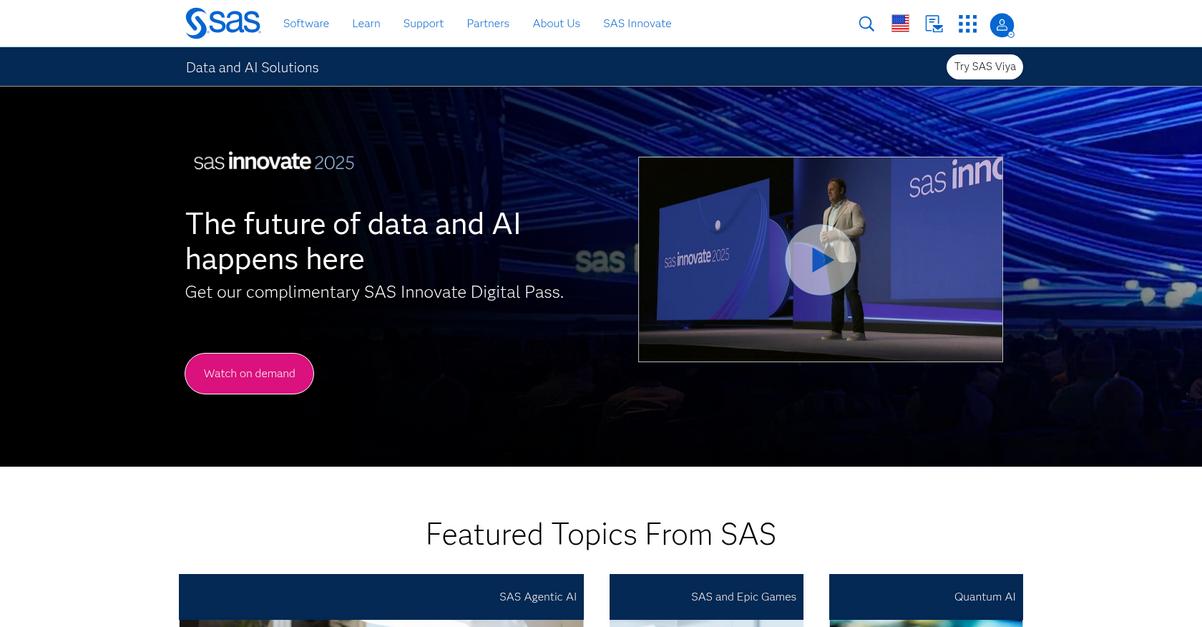
Are you truly unlocking insights from your data?
Many struggle with complex data and manual processes, making accurate reporting difficult. This means that extracting meaningful insights from growing data volumes can feel overwhelming, leading to missed opportunities. Here’s how SAS helps.
The result? You can quickly identify patterns and make smarter decisions.
SAS empowers you to transform raw data into actionable intelligence. This means you can easily analyze complex information to understand your customers better, optimize operations, and predict future trends. Additionally, with SAS, you can integrate disparate data sources for a holistic view, ensuring your analysis is comprehensive. Plus, its scalable architecture supports your growing data needs, providing you with powerful visualizations and demonstrable ROI.
You’ll drive significant business growth.
While we’re discussing improving business operations through data analysis, understanding how employee training software can further boost productivity is also important.
Key features:
- Predictive analytics capabilities help you forecast future outcomes, allowing you to proactively address challenges and seize opportunities for your business.
- Integrated data management ensures you can combine and clean data from various sources, giving you a complete and accurate picture for robust analysis.
- Robust reporting and visualization tools allow you to create clear, compelling dashboards and reports that communicate complex insights simply to stakeholders.
SAS features, pricing, & alternatives →
Verdict: SAS is among the best data analysis tools for businesses seeking to overcome data complexity and drive growth. Its powerful analytics, data integration, and visualization capabilities enable you to make data-driven decisions that directly impact your bottom line and improve operational efficiency.
5. Sisense
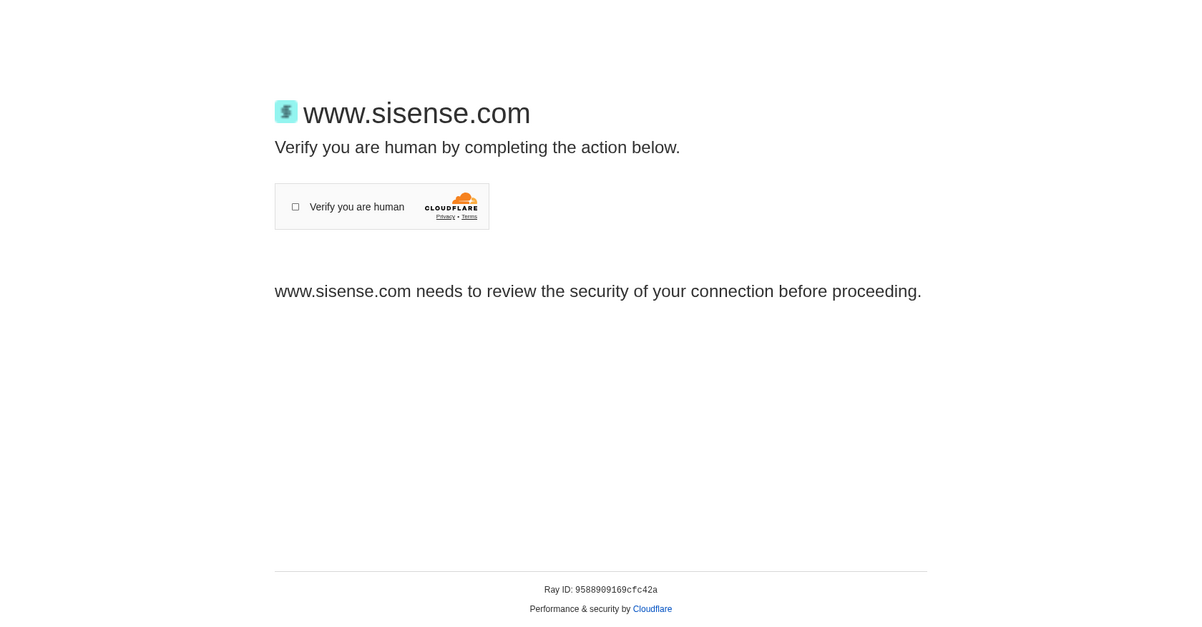
Struggling to turn your data into actionable insights?
Sisense delivers an AI-powered analytics platform to unlock your data’s potential.
This means you can effortlessly model, visualize, customize, and integrate your analytics.
Here’s how to bridge the gap between insights and action.
Sisense Intelligence helps app creators and developers deliver smarter, embedded analytics with AI-driven features. This guides your users to better, faster decisions right where they work.
You can create intelligent data experiences accessible to every user, technical or not. Sisense Intelligence features like assistant and narrative enable natural-language exploration and auto-generated summaries, so insights come faster and more often for your team. Additionally, with Compose SDK and embeddable components, Sisense simplifies integrating AI-powered analytics into any app, providing a seamless user experience without requiring data science expertise. This empowers your users to anticipate what’s next with features like forecast and trend.
The result: move beyond traditional BI.
Key features:
- AI-powered analytics platform that simplifies modeling, visualizing, customizing, and integrating data, enabling effortless data analysis for your business.
- Sisense Intelligence features like assistant and narrative for natural-language data exploration and auto-generated summaries, making insights accessible to all users.
- Composable and embeddable analytics via Compose SDK and components, allowing precise, flexible integration of AI-powered insights directly into your existing applications.
Sisense features, pricing, & alternatives →
Verdict: Sisense stands out as one of the best data analysis tools, offering an AI-powered platform for effortless data modeling and visualization. Its embedded analytics capabilities and features like natural-language exploration empower both technical and non-technical users to derive faster, more accurate insights from their data.
6. ThoughtSpot

Struggling to find real insights from your data?
ThoughtSpot directly addresses this pain with its Agentic Analytics Platform, empowering every user with connected insights.
This means you can say goodbye to overwhelming complexity and technical barriers, transforming insights into actionable outcomes seamlessly.
Here’s how to unlock your business’s full potential.
ThoughtSpot introduces Spotter, your dedicated AI Analyst, which answers questions and provides business-ready insights for anyone. This allows your team to get immediate answers, eliminating time-consuming manual processes and inaccurate reporting.
You can easily embed AI-powered insights everywhere your teams and customers are, making any app a smart app with just a few lines of code. Additionally, Analyst Studio provides a collaborative creator space with power tools like SQL, R, and Python, helping data teams accelerate insights.
Plus, you can prepare, join, model, and shape your data in real-time or cached, connecting to Google BigQuery, Snowflake, and Amazon Redshift, ensuring you can analyze any data, anywhere.
Ultimately, this drives smarter, faster decisions.
While understanding data is key, you might also find my guide on best enterprise search software helpful for quickly locating information.
Key features:
- AI Agents: Experience true self-service with autonomous AI agents that deliver trusted, business-ready insights for anyone on your team.
- Analyst Studio: Empower your data team with a collaborative creator space, integrating SQL, R, and Python for accelerated data-to-insight workflows.
- Any Data, Anywhere: Connect, prep, and model your data from various sources like Google BigQuery, Snowflake, and Amazon Redshift, ensuring comprehensive analysis.
ThoughtSpot features, pricing, & alternatives →
Verdict: ThoughtSpot is undoubtedly one of the best data analysis tools, enabling unparalleled data-driven decision-making. For instance, customers like Rachel Hartley turned 45 days of Excel work into 20 minutes with ThoughtSpot, gaining significantly better insights.
7. Google Cloud
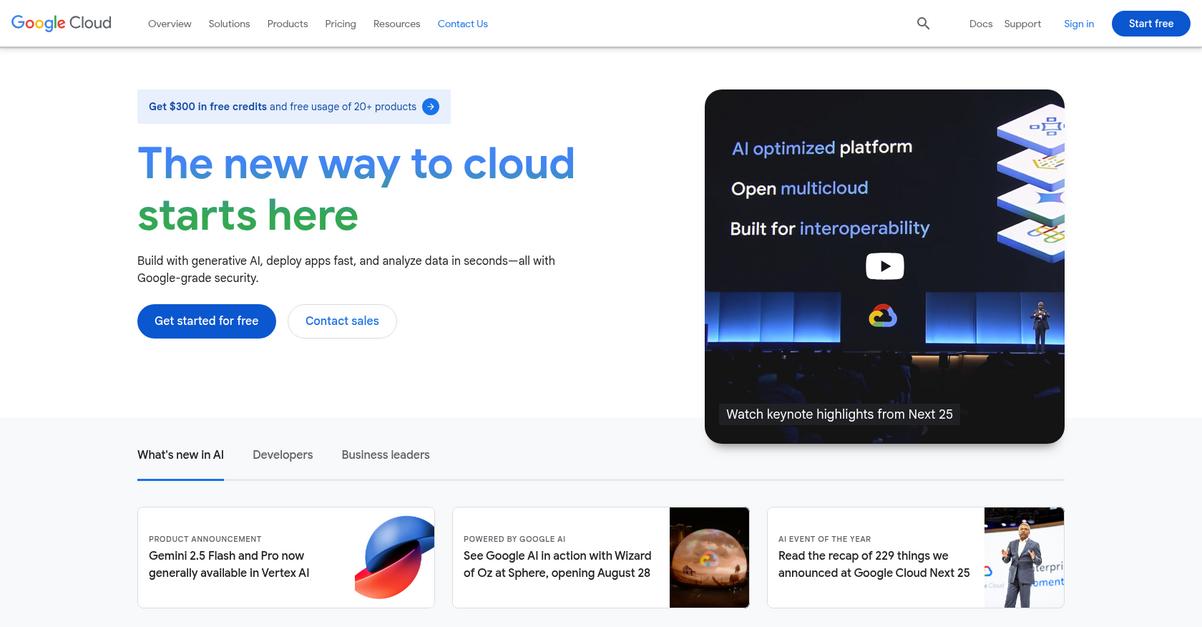
Struggling to extract insights from your overwhelming data?
Google Cloud provides an AI-powered cloud platform to analyze data rapidly, deploy apps fast, and build with generative AI.
This means you can easily unify diverse data, streamline processes, and unlock actionable insights. This powerful combination reduces complexity and manual effort.
Here’s how you gain clarity.
Google Cloud offers a leading data platform designed to help anyone on your team access business insights through advanced machine learning and analytics. This includes BigQuery, allowing you to run analytics at scale with significantly lower TCO.
You can also use Looker to reveal the true power of your data and bring clarity to every situation, offering robust BI, data applications, and embedded analytics. Additionally, with Dataflow, you can ingest, process, and analyze event streams in real time to make your data more useful, ensuring you’re always working with the freshest information. Plus, integration services simplify connecting disparate data sources.
The result is data-driven decisions that propel business growth.
Key features:
- AI and Machine Learning: Build intelligent applications and agents using Vertex AI and Gemini, leveraging over 200 foundation models for advanced analytics.
- Scalable Data Analytics: Run analytics at scale with BigQuery, offering 26%–34% lower three-year TCO and real-time processing of event streams with Dataflow.
- Unified Business Intelligence: Gain clarity with Looker for powerful BI, data applications, and embedded analytics, connecting seamlessly to your data.
Google Cloud features, pricing, & alternatives →
Verdict: Google Cloud stands out as one of the best data analysis tools, offering comprehensive AI and machine learning capabilities alongside scalable data analytics, exemplified by BigQuery’s lower TCO and Looker’s robust BI platform. This empowers data analysts and business leaders to drive growth with data-driven decision-making.
8. Domo
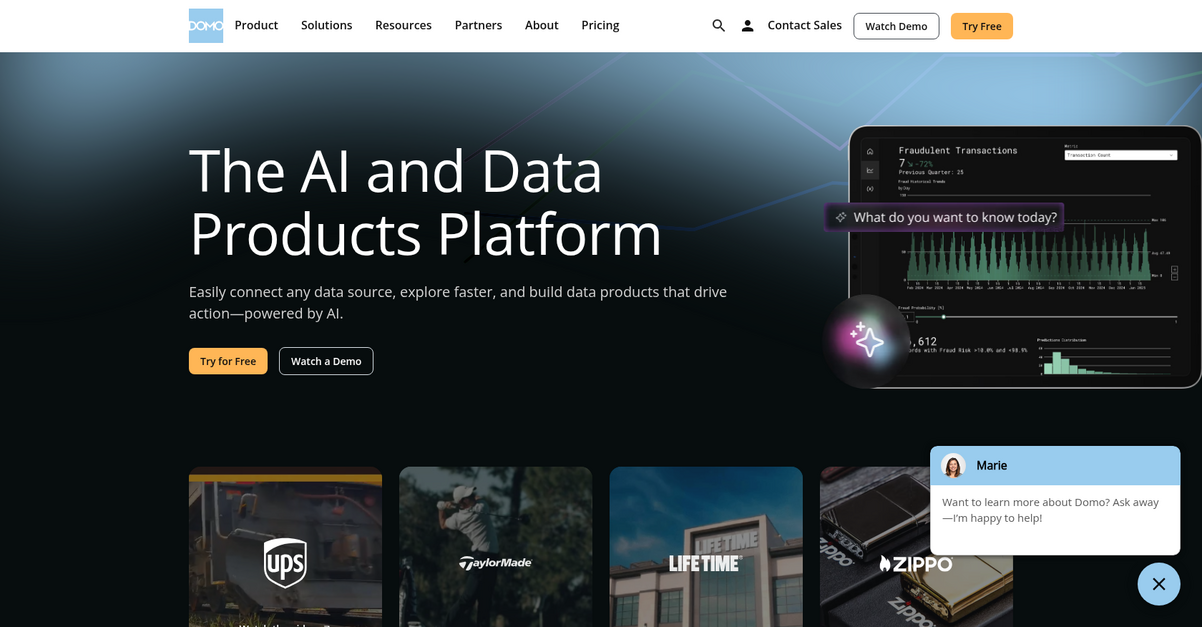
Struggling to transform raw data into actionable business insights?
Domo helps you overcome technical barriers by connecting, centralizing, and preparing data from any source. This means you can easily integrate disparate data, streamline your processes, and ensure trusted information for analysis.
You’ll discover and share insights instantly, leveraging powerful ETL capabilities to transform your data with ease, so your team can focus on high-impact priorities and strategic growth.
Here’s how you can command your data.
Domo solves these problems by providing an AI and data products platform that empowers you to build powerful data products, accelerating business-critical insights with AI assistance at every step. This means you can make smarter, faster decisions.
You can create your own AI agents, like tireless teammates, automating tasks and growing alongside your business, which helps optimize your workflows with confidence and reduce costly errors. You can also embed AI Chat into your content, delivering natural conversations and personalized insights directly to your end users.
Additionally, Domo offers no-code workflows and self-service reporting, allowing you to streamline operations and ensure compliance with pre-built governance frameworks. These tools help prepare and enrich your data, ensuring every AI interaction is trusted and precise for impactful results across your organization.
The result is data-driven decision-making for business growth.
While we’re discussing optimizing workflows and preventing errors, you might also find my guide on best Android data recovery software helpful for personal or business mobile data challenges.
Key features:
- Comprehensive Data Integration: Connect, centralize, and prepare data from any source using powerful ETL capabilities and connectors like Salesforce, SAP, and Excel.
- Advanced Business Intelligence: Discover and share insights instantly with robust charts, dashboards, and automated alerts, enhanced by AI assistance.
- Intelligent Automation & AI: Build custom AI agents and automate workflows using no-code options and AI-assisted tools for tasks like model forecasting and reporting.
Domo features, pricing, & alternatives →
Verdict: Domo stands out as one of the best data analysis tools, helping your team drive innovation and impact. It centralizes and simplifies data access, allowing you to build impactful visualizations and leverage AI agents to automate tasks, reducing manual processes by hundreds of hours, as seen with their NBA customer success story.
9. Alteryx
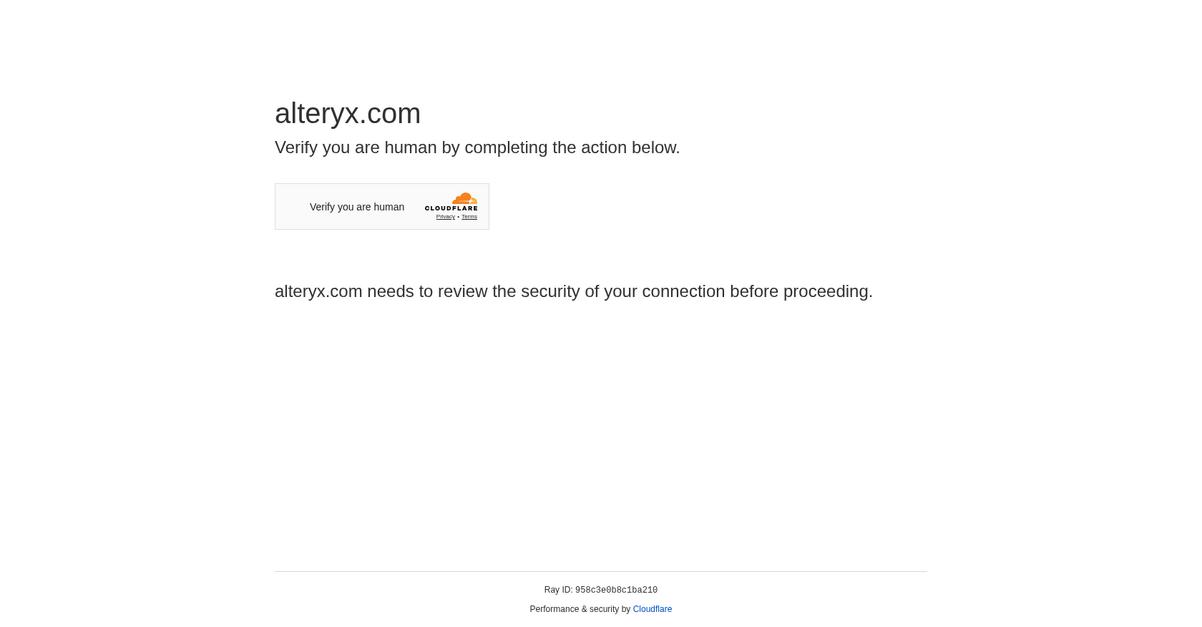
Struggling to make sense of your overwhelming data?
Alteryx offers a unified analytics platform to build, scale, and govern your data analysis in one place. This means you can simplify complex data problems with ease.
You’ll find an easy-to-use drag-and-drop interface that makes analyzing, discovering, and sharing insights accessible to anyone, regardless of technical expertise. The result is accelerating data to decisions, faster.
Alteryx allows you to connect directly to all your data clouds. This helps you get fast, governed insights without complex coding, simplifying access and accelerating business outcomes.
Additionally, Alteryx Copilot serves as your AI-powered analytics assistant, integrating generative AI tools directly into your workflows. You can also prepare your data for any Large Language Model (LLM) with their AI Data Clearinghouse, which governs and contextualizes enterprise data for explainable and accurate outputs. This means you spend less time wrangling data and more time driving value through automated, repeatable workflows that eliminate manual errors.
Ultimately, Alteryx helps you unlock hidden insights for smarter, faster decision-making.
If you’re also looking into improving organizational efficiency, my article on workforce analytics software covers how to boost productivity and cut costs.
Key features:
- Unified Analytics Platform: Builds, scales, and governs analytics in a single environment, centralizing data analysis processes for consistency and efficiency.
- AI-Powered Workflows: Accelerates data-to-decision processes with Alteryx Copilot and Generative AI tools, enhancing analytical capabilities and insights.
- Secure Data Access and Governance: Connects to all your cloud data platforms with robust security features, ensuring trusted, compliant, and AI-ready data.
Alteryx features, pricing, & alternatives →
Verdict: Alteryx stands out among the best data analysis tools for its unified platform that integrates AI, automation, and analytics. It helps you prepare, analyze, report, and share insights, while automating workflows to save significant time, like DoorDash saving 25,000 hours by automating financial processes.
Conclusion
Ready to unlock your data’s potential?
Choosing the right tool is overwhelming. The wrong one leads to inaccurate reports and stalls your business growth, creating frustrating delays.
The payoff is huge. CARMATEC reports that companies see a 40% reduction in error rates and 25% faster decision-making. That’s a massive impact on efficiency that directly boosts your bottom line.
So what’s my top recommendation?
After reviewing all the options, I believe Power BI is the clear winner for turning complex data into the actionable business intelligence you need to grow.
Its seamless integration with Microsoft 365 and powerful AI insights helped one business achieve a 321% ROI. It is simply one of the best data analysis tools I’ve tested for this purpose.
To truly unlock all your data’s potential, gathering real-time input is key. My guide on best audience response software will help you get real data.
I recommend you start a free trial of Power BI to see how it can transform your team’s decision-making process.
You’ll finally get clarity from your data.






